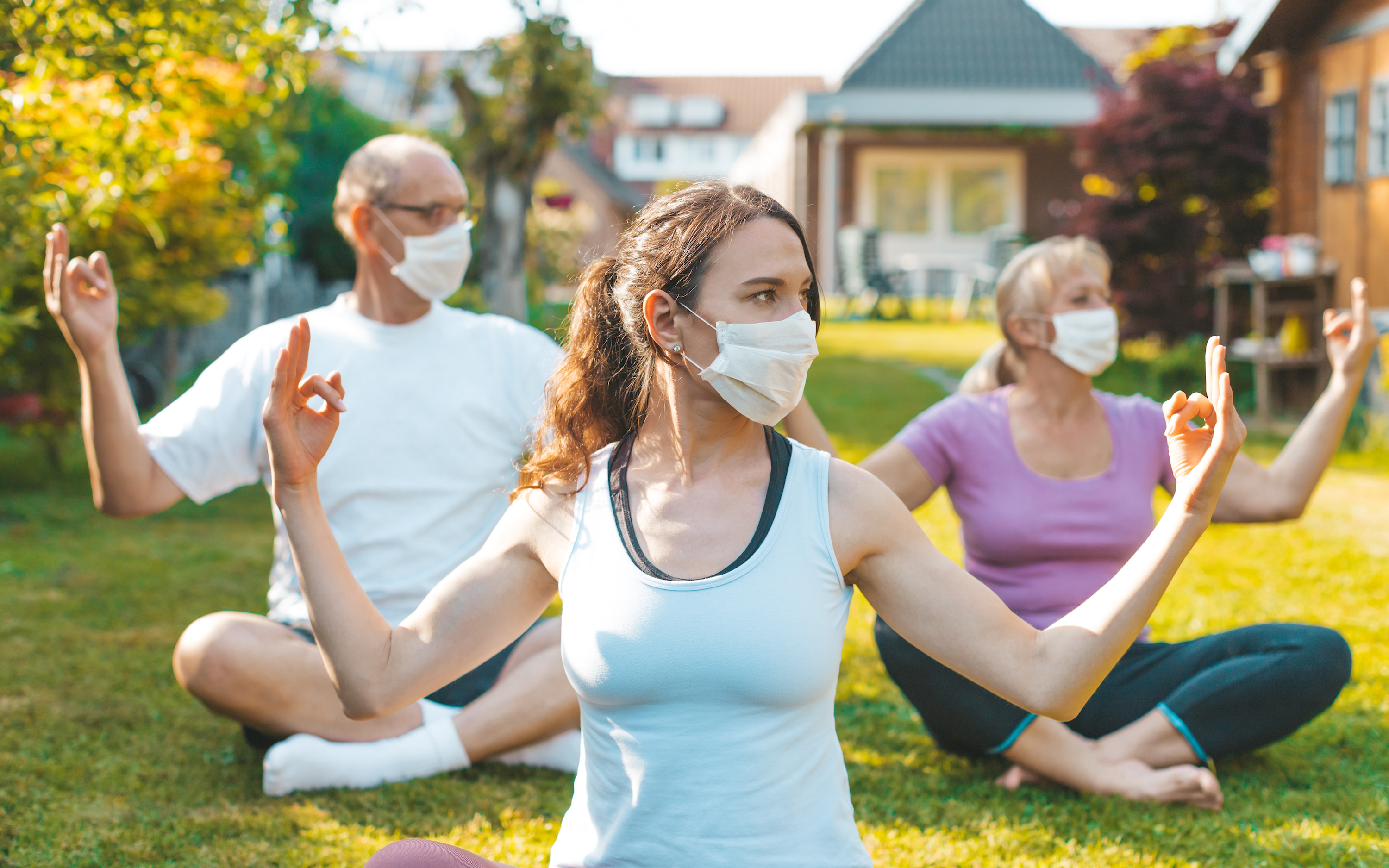Though New Jersey has allowed gyms to reopen, many former members may never go back.
People have been finding other ways to stay active. They’ve taken YouTube classes, exercised outdoors and worked out at home. And many have bought their own equipment: dumbbells and bicycles have been selling out.
After developing alternatives, some are finding no compelling reason to return to the gym.
“Before the pandemic, I was an avid gym member, going five to six times a week,” said Brian Gonzalez, who belonged to Ironbound Fitness in New Jersey.
Now, he’s cancelled his membership.
“After I purchased my own gym equipment, I realized I don’t need to go any more, because I don’t have to wait for equipment, and I don’t need to worry about being around others,” he said.
“After I purchased my own gym equipment, I realized I don’t need to go [to the gym] any more, because I don’t have to wait for equipment, and I don’t need to worry about being around others.” — former Ironbound Fitness member Brian Gonzalez
The Centers for Disease Control and Prevention has advised limiting group training, both indoors and out. New Jersey allowed gyms to reopen as of Sept. 1, albeit with a raft of restrictions: gyms must limit occupancy to 25 percent capacity, or to one person per 200 square feet; require masks; take patrons’ temperatures; and limit or eliminate shower use.

Some gyms can’t survive
A number of gyms and fitness companies have been unable to survive even a few months of shutdown, and have been forced to file for bankruptcy, among them 24 Hour Fitness Worldwide, Gold’s Gym, Cyc Fitness, Yoga Works and New York Sports Club owner Town International (some of these centers continue to operate, as they restructure their finances).
Gyms must not only find ways to keep their clients, but must also figure out how to generate income.
LA Fitness is charging clients $10 a month to keep their memberships frozen.
“I don’t want to have to work out in a mask, that’s crazy,” said Josef Kakish, a former member of New York Sports Club in East Brunswick, N.J. “I’d also rather not put my family at risk, just to work out.”
“I don’t want to have to work out in a mask, that’s crazy. I’d also rather not put my family at risk, just to work out.” –Former New York Sports Club member Josef Kakish
Kakish spoke as he was on his way to cancel his gym membership. He plans to keep up with his at-home fitness plan, instead.
Some say the pandemic has pushed them to find other ways to live a healthier and more affordable lifestyle.
A spring survey of 2,009 adults by online broker TD Ameritrade found that 59% of Americans don’t plan to renew their gym memberships, even after the pandemic ends. The top reason: most respondents had replaced the gym with lower-cost workout regimes, such as running and walking outdoors, and had invested in their own exercise equipment.
Creative programming
But others have tired of their makeshift regimes, and say they’re ready to return to their gyms and group workouts, to regain motivation.
And after making creative adaptations, some gyms are thriving.
Retro Fitness and Anytime Fitness have both advertised new promotions.
“We had 99 signups this month, and that is a lot compared to most months,” said Lauren Morelli, an employee of Retro Fitness in Sayreville, N.J. But “if the shut-down lasted until November, we would’ve been in financial trouble,” she added. “We did get the Paycheck Protection Program Loan until around June.”
Other gyms have made it easy for their members to cancel their memberships.
Morelli said Retro Fitness gyms had been seeing many more membership freezes than cancellations – which has led to hope that most members will return.
Is it safe to go back?
“Re-opening of gyms is not safe — but of course many things are not safe, including driving an automobile, and yet we continue to do that,” said Rutgers Food Science professor Donald Schaffner. “Prior to the pandemic, there was a possibility that you could contract the flu from being in a gym — so gyms have never been risk-free.”
“Re-opening of gyms is not safe — but of course many things are not safe, including driving an automobile, and yet we continue to do that.” — Rutgers professor Donald Schaffner
To make gym attendance safer, public health experts advise going in workout clothes (to avoid the locker room), avoiding the showers and maybe bringing your own towel.
Many gyms have blocked off some machines to enforce six-foot separations, and require members to check in and out online.
24 Hour Fitness – which continues to operate — closes for wipedowns at regular intervals during the day.
Rutgers University gyms are requiring advance appointments, said student Devan Khanore.
Larger gyms are requiring members to schedule appointments. 24 Hour Fitness members, for example, may schedule visits for only up to 90 minutes.
The International Health, Racquet & Sports Association (IHRSA), a technology company that specializes in member tracking in the fitness industry, found that gym reopening is not contributing to the spread of COVID-19.
“I think it’s important to realize that words like “safe” and “unsafe” are probably not helpful in these times,” Schaffner said. “I like to think about things in terms of level of risk.”
He added that it would be safest to work out alone — but as long as one maintains distance and wears a mask, there is a level of safety there.
Isabella Fitness in Sayreville, N.J. offers personal fitness workouts, for those who want to avoid groups.
Outdoor exercise is another option.
Though gyms are taking a hit, they are unlikely to disappear.
Physical fitness also has a great many pluses: it plays a major role in maintaining a healthy immune system, and reducing the risk of obesity, lung disease, heart disease and diabetes. And all of those factors cut COVID-19 risk, too.

